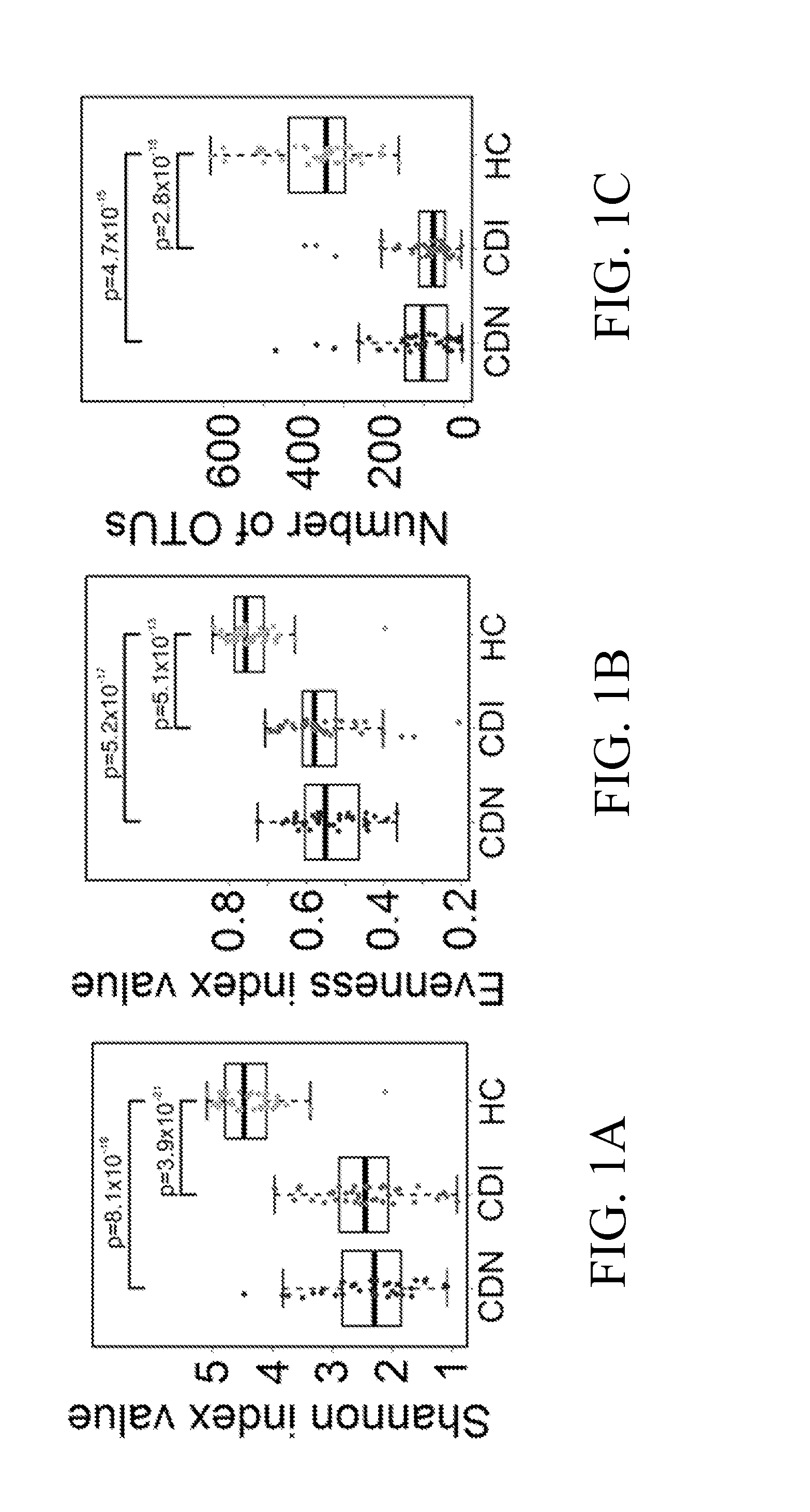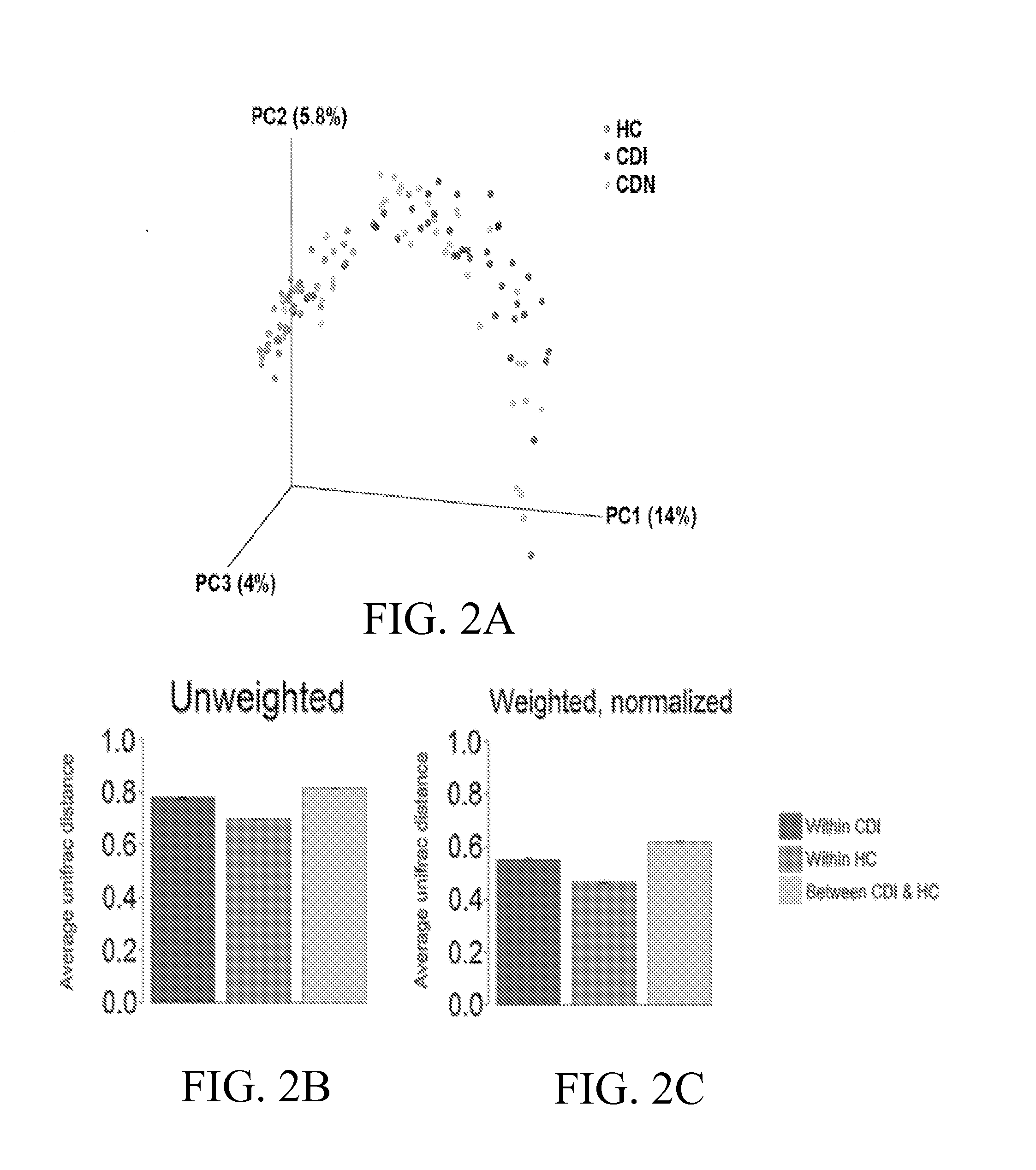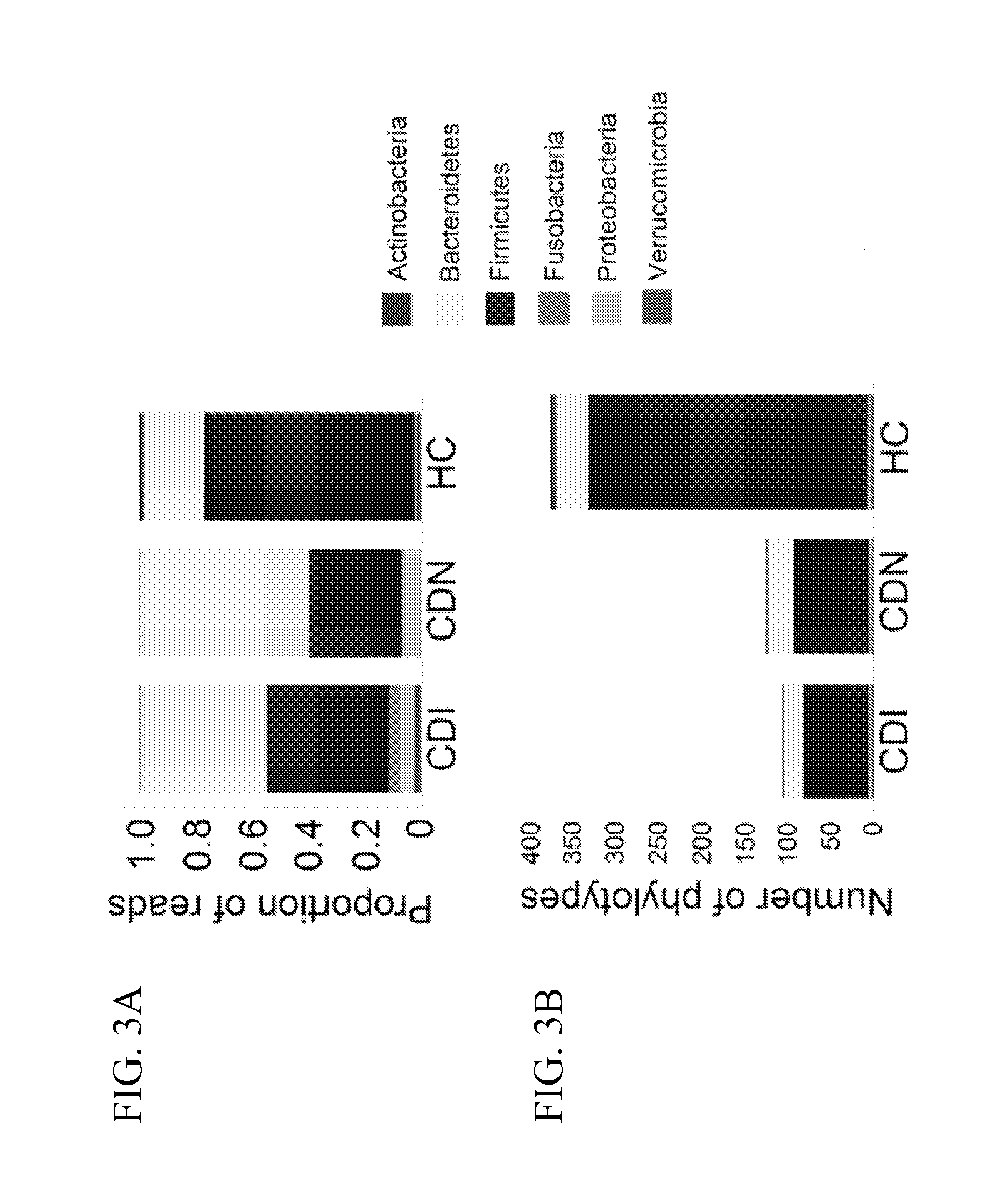Butyrogenic bacteria as probiotics to treat clostridium difficile
a technology of clostridium difficile and probiotics, which is applied in the direction of bacteria material medical ingredients, antibacterial agents, biocide, etc., can solve the problems of undefined gut flora essential components, undefined which components of the gut flora are essential, and the basic ecological features of the gut flora that is susceptible to i>c. difficile /i>infection have not been well defined
- Summary
- Abstract
- Description
- Claims
- Application Information
AI Technical Summary
Benefits of technology
Problems solved by technology
Method used
Image
Examples
example 1
Methods
Subjects and Sample Collection
[0074]The University of Florida Institutional Review Board reviewed the study design. Stool samples positive (CDI) and negative (CDN) for C. difficile, defined based on results of ELISA (C. Diff Quik Chek Complete™, Techlab, Blacksburg, Va.) or GeneXpert multiplex PCR for detection of toxin B gene (Cepheid, Sunnyvale, Calif.), were obtained from the Clinical Microbiology Laboratory at Shands Hospital at the University of Florida. Fecal samples from healthy individuals were collected from subjects undergoing screening colonoscopy and were analyzed in parallel as controls. Toxin B (tcdB gene) specific PCR (Kuhl, S. J., Tang, Y. J., Navarro, L., Gumerlock, P. H., and J., S., Jr. 1993. Diagnosis and monitoring of Clostridium difficile infections with the polymerase chain reaction. Clin Infect Dis 16 Suppl 4:S234-8; Gumerlock, P. H., Tang, Y. J., Meyers, F. J., and Silva, J., Jr. 1991. Use of the polymerase chain reaction for the specific and direct d...
example 2
Material and Methods
Genomic DNA Isolation:
[0089]Genomic DNA (gDNA) was isolated using mechanical agitation coupled with a bead beating technique (Salonen, A., Nikkila, J., Jalanka-Tuovinen, J., Immonen, O., Rajilic-Stojanovic, M., Kekkonen, R. A., Palva, A., and de Vos, W. M. Comparative analysis of fecal DNA extraction methods with phylogenetic microarray: effective recovery of bacterial and archaeal DNA using mechanical cell lysis. J Microbiol Methods 81:127-34.). A sterile Q-tip applicator (Whittaker General Medical, Richmond, Va.) was applied to the stool sample and immersed in tubes containing 0.1 mm glass beads and lysis buffer (MO-BIO PowerSoil DNA Isolation kit, Carlsbad, Calif.). Tubes were immersed in a 95° C. water bath for 10 min before vortex / agitation according to manufacturer's recommendation. DNA was eluted in 50 μL elution buffer and concentrations were determined spectrophotometrically (Nanodrop 1000c, Thermo Scientific, Wilmington, Del.).
16S Barcoded PCR on Genomi...
example 3
[0102]A longitudinal study was performed to assess whether a persistent depletion of Lachnospiraceae, Ruminococcaceae and butyrogenic bacteria is associated with recurrent C. difficile infection (CDI).
Methods
[0103]Samples of microbial communities in 494 longitudinal specimens from 30 adults following CDI up to 1 year were taken, and compared to fecal microbiota from 14 healthy controls. Genomic DNA was extracted from each specimen and the V1-V3 hypervariable region of bacterial 16S rRNA gene segments was amplified using broad-range rRNA PCR primers 27F and 534R and the amplicons were pooled and deep sequenced using Roche / 454 pyrosequencing.
Results
[0104]With the pyrosequencing data analysis, a total of 494 longitudinal fecal samples from 30 subjects were analyzed by 16S pyrosequencing where an average of 3,986 sequence reads were obtained per sample. Roughly 2 million partial V1-V3 16S rRNA sequences from ˜500 longitudinal fecal samples were analyzed, with identification of a total ...
PUM
| Property | Measurement | Unit |
|---|---|---|
| Strain point | aaaaa | aaaaa |
Abstract
Description
Claims
Application Information
 Login to View More
Login to View More - R&D
- Intellectual Property
- Life Sciences
- Materials
- Tech Scout
- Unparalleled Data Quality
- Higher Quality Content
- 60% Fewer Hallucinations
Browse by: Latest US Patents, China's latest patents, Technical Efficacy Thesaurus, Application Domain, Technology Topic, Popular Technical Reports.
© 2025 PatSnap. All rights reserved.Legal|Privacy policy|Modern Slavery Act Transparency Statement|Sitemap|About US| Contact US: help@patsnap.com



